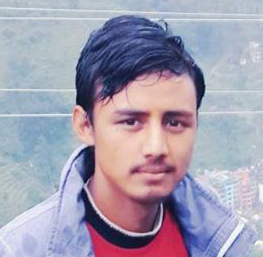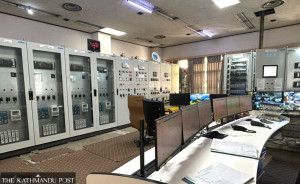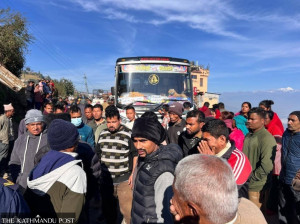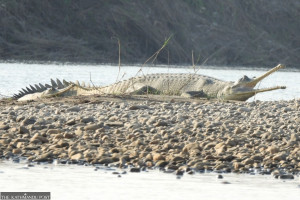Bagmati Province
Sindhupalchok settlements at risk of landslides
At least 30 families from Ghumthang and Bhotang have been living in fear of floods and landslides caused by the erosion of the Ghueay stream.
Anish Tiwari
Sukuman Kami has been living at the Bhotang Gaihra settlement since April last year, taking shelter under a tent with his family of five every time it rains. His house and several others in his settlement were destroyed by the 2015 earthquake and rebuilt only three years ago. But in 2020, the Ghueay stream started eroding its streambanks cutting into the settlements and putting the lives of the residents of Bhotang Gaihra and Ghumtang at risk every monsoon.
“We have been running here and there looking for safety since 2015. We had finally completed the reconstruction of our house in 2020 when the stream started eroding its banks,” said Kami. “We can’t live in the house when it rains and the stream swells. Since last year, we have been living under tents during the rainy season. Once it stops raining, we go back to our house but can’t really feel safe because the stream may flood anytime.”
Scared that his house might be swept away by landslides or floods, Kami says there is not a day when he is not worried about his family. “I am equally worried about the floodwaters from the Ghueay stream inundating our fields,” he said. “There will be nothing left for us to eat if we lose our fields.”
According to Durga Prasad Bhandari, head of the disaster management unit of the Barhabise Municipality, 10 families in ward 7 that had been living at high risk of landslides have been moved to a safer place and are living under tents provided by the municipality.
Kami says folks of Lidi village in Jugal Rural Municipality are also living at risk of floods and landslides. In the 2020 monsoons, 39 people from 17 families in Lidi were killed in landslides. The landslides wiped away 13 houses, and almost 172 houses were damaged. Most of the residents of these at-risk villages are from Dalit, Tamang, and Sunar communities.
At least 30 families from Ghumthang and Bhotang settlements of the Barhabise Municipality ward have been living in fear of floods and landslides caused by the erosion of the Ghueay stream starting 2020. The settlements had suffered severe damages in the 2015 earthquake weakening the landmass, say locals.
According to a 2021 geological study conducted in 50 villages and settlements of Barhabise and other local units by the National Disaster Risk Reduction and Management Authority (NDRRMA), with the technical support of government and non-governmental organisations, a total of 13 settlements in the Barhabise Municipality are at high risk of landslides and erosion, among other natural disasters. The officials of the NDRRMA also informed the municipal authorities to relocate the locals to a safer place.
According to the data of Barhabise Municipality, the total number of families living in the municipality is 27,000, and out of that, nearly 5,000 families live in these 13 settlements.
Kanya Maya Tamang of Ghumthang, who has been living under a tent, says the authorities are doing little to help disaster victims relocate permanently to a safer place.
“A study has been conducted that says people are at risk, so why is the government not doing anything for us? They have left us to suffer in these tents,” said Tamang. “The local unit authorities say that they are helpless without help and coordination from authorities like the District Disaster Management Committee and provincial government. But we are tired of living in fear all the time. We need the local government to take action immediately before the monsoon arrives this year.”
Bhandari, from the disaster management unit of the Barhabise Municipality, says the local unit has been doing what it can to help the disaster-displaced but they need financial support from the higher authorities to be able to relocate the victims permanently.
Balkrishna Basnet, mayor of Barhabise Municipality, says after the NDRRMA published its report, they started relocating people to various safer places in the municipality and provided them with tents and some clothes. “We know these are only temporary measures but until we can manage enough budget, we can’t do anything,” said Bhandari. “We have requested the higher authorities for help to relocate the victims, but we haven’t heard back from anyone.”




 18.12°C Kathmandu
18.12°C Kathmandu













